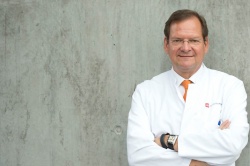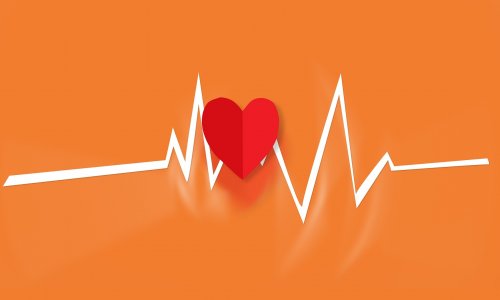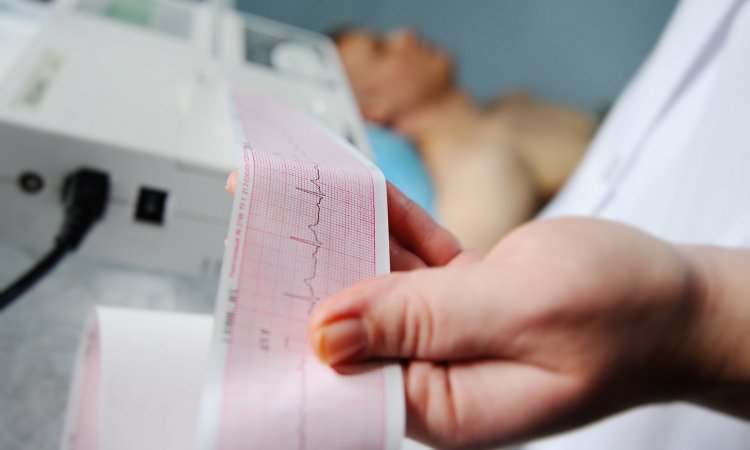Cardiology I
Chest pain units in Germany
The German care system for patients with acute and unspecific chest pain is unique in Europe. The closely knit and countrywide network of accredited Chest Pain Units (CPUs) ensures fast and targeted diagnosis of acute cardiac events. The German CPUs may soon serve as a blueprint for other European countries. The German Cardiac Society (DGK) has already accredited the first institutions – others will follow suit.
Reports: Bettina Döbereiner

Trauma specialists in the USA pioneered modern chest pain care. In the early 1980s, the first Chest Pain Centre (CTC) was established in the emergency room at the St. Agnes HealthCare Hospital in Baltimore, Maryland. The main objective was to increase survival rates of patients with acute myocardial infarction, unstable angina or acute coronary syndrome by offering fast diagnosis and targeted treatment. Today there are approx. 3,500 chest pain centers in the USA, 826 of them accredited according to the Society of Cardiovascular Patient Care (SCPC), the responsible body.
In Germany, Dr Thomas Münzel, professor and head of cardiology at University Hospital in Mainz, was instrumental in launching and driving CPU development and quality assurance. He and his team established the third German CPU at University Hospital Mainz in 2005. In 2007 Münzel also initiated a task force within the German Cardiac Society to draft quality criteria for CPUs, develop an accreditation procedure and lay the groundwork for more CPUs in this country. Just one year later DGK accredited the first CPUs and today Germany has 215 accredited CPUs.
CPU standards have been continuously adjusted and improved, although the core elements have not altered. The foremost objective of a CPU is to provide a definite diagnosis and timely treatment for patients presenting with unspecific chest pain. The team is supported by internal medicine specialists and qualified cardiac care staff, led by a cardiologist. At least four monitoring units with ECG must be available 24/7, 365 days a year. In general, the CPUs are integrated in a hospital, because transport to the cardiac cath lab must be completed within 15 minutes to ensure speedy coronary angiography and, if necessary, a percutaneous coronary intervention (PCI).
Whilst in the USA several randomised controlled studies have shown the effectiveness of chest pain centres, Germany has no such comprehensive studies on this. Nevertheless, results of the US researchers agree with the results of small-scale German studies, Münzel says. For example, a retrospective, single centre analysis at Mainz University Hospital indicates that, among myocardial infarction patients admitted to a CPU, the one-year survival rate is higher than among those admitted to a conventional emergency department (see illustration).
In 2008, DGK commissioned the Institute for Infarction Research in Ludwigshafen to set up a Chest Pain Center register. The initial analysis of 30,000 patient data sets shows that Germany CPUs record a high number of self-referrals. Between 2008 and 2010, 32 percent of the admitted patients were ‘walk-ins’ and around 30 percent of them presented with acute coronary syndrome – mostly younger people who had a vague feeling that something was wrong, but for a variety of reasons did not call the emergency medical services. ‘Without CPUs, this patient group would not have received help in time but, because of the CPUs they have a better long-term prognosis,’ Münzel underlines.
Similar to the USA’s SCPC, Münzel and his DGK colleagues want to offer CPU accreditation internationally, above all in Europe, where many countries have comparable levels of care and comparable infrastructures. Thus, the recently updated DGK accreditation criteria will also be published for the first time in English (Clinical Research in Cardiology, 2015). DGK has already accredited two CPUs in Switzerland while hospitals in Austria, Turkey and Qatar expressed interest in the accreditation process.
Germany, however, is not the only European country to adopt the US model to set up chest pain facilities: Great Britain, Spain and France follow similar routes. However, unlike Germany, these countries have so far not managed to implement accreditation processes and create a quasi-nationwide CPU network. Why that is the case is a matter of speculation – although it is no speculation that Münzel’s personal and on-going commitment continues to be crucial to the German CPU success story.
PROFILE:
Professor Thomas Münzel MD has been Director of Cardiology and Angiology at Johannes Gutenberg University Hospital in Mainz since 2004. He was instrumental in establishing the third German Chest Pain Unit (CPU) there in 2005. He has chaired the CPU Accreditation Committee at the German Cardiac Society (DGK) since 2009.
29.04.2015











